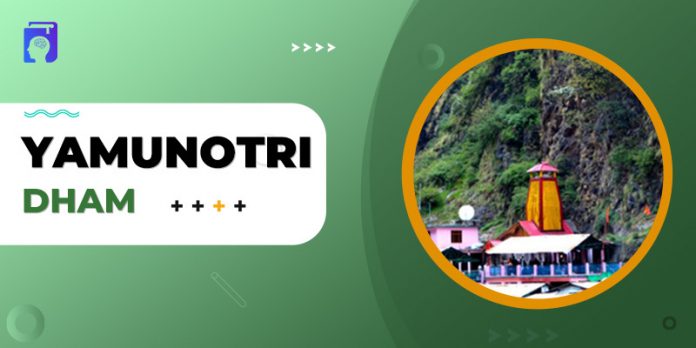Yamunotri is a quaint little hamlet cradled in the middle reaches of the Garhwal Hills. Despite its small size and obscure location, the place has a tremendous presence on the tourism landscape. Each year, travelers from across the world take time from their busy schedules and beat the odds to be here. Some come for a plenary indulgence, some to experience peace and tranquillity and some in anticipation of adventure.
Yamunotri Dham
Location
Yamunotri is a fascinating and invigorating spot on the foothills of the Garhwal mountain ranges, with beautiful shrubbery, verdant grasslands, and flowing streams.
The place is surrounded by towering mountains and situated next to the Indo-Chinese frontier at a soaring height of 3293 meters. The location adds mysticism and charm to an otherwise spiritual place from where one of the most revered rivers originates.
Yamunotri Significance
Yamunotri is among the revered and frequented places in India. Though adrenaline junkies frequent this place, a significant percentage of visitors are Hindu devotees. It’s where the holy Yamuna has its origin, and hence, the name. Devotees throng this sleepy hamlet to achieve atonement for their sins and lead a blessed and prosperous life.
Without visiting Yamunotri, the Chota Char Dham excursion is incomplete. In fact, it is the starting point for this popular pilgrimage. What is Chardham, you might wonder? Well, think of it as a set of four sacred sites scattered across different parts of the country. These sites include Kedarnath, Badrinath, Gangotri, and Yamunotri.
With spectacular Garhwal peaks at the backdrop and River Yamuna flowing majestically, Yamunotri is blessed with some panoramic vistas that entice you into submission. Add to it the glaciers and thermal springs, it is a soul-satisfying place with so much to offer. Plus, Yamunotri offers trekkers an opportunity to test their skills and endurance, making it an ideal destination for those who prefer living off the edge.
Yamunotri Etymology
Yamunotri is a self-explanatory term, meaning the place where the Yamuna descended. (Yamuna + Utri) Yamunotri, Jamnotri, Yamunotri Dham, and Yamunotri Glacier, all refer to the same place. Speaking of the name Yamuna, it stems from the word “Yama”, which stands for “Twin”. The river is referred to as “Yami” and “Kalindi” in puranic literature.
Yamuna: The Patron Goddess of Yamunotri
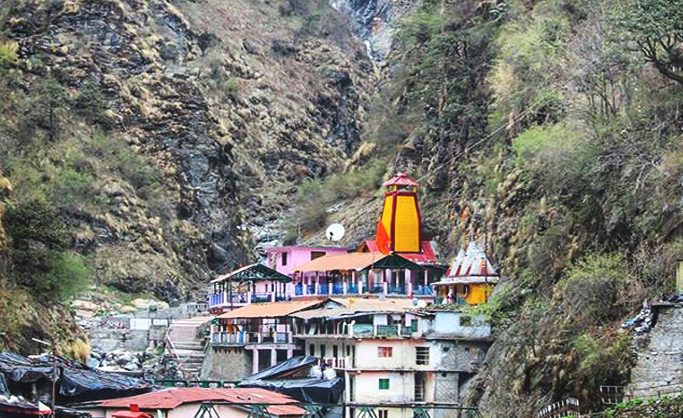
The Yamuna is a key river with religious, historical, economic and ecological significance. Whatever your reason to visit Yamunotri, knowing Yamuna’s significance is helpful.
Religious Significance
Hindus worship the Yamuna. It’s that religiously significant. The affiliation comes from the mythological status of the river. As a goddess, Yamuna is the daughter of Aditya and Sangya. The former is the personalised form of the Sun while the latter refers to the cloud goddess. Yama (deity of death) and Manu (archetypal man) are Yamuna’s siblings.
Thanks to her divine powers, the river absolves sins, cleanses the soul and grants health to anyone who drinks her water or takes a dip in it. Besides Yamunotri Dham, the river hosts some of the revered and visited pilgrimage sites in India. Prayagraj (Triveni Sangam), Mathura and Bateshwar, you name it.
Historical Significance
The Yamuna finds mention in various scriptures, notably Vedas and Bhraminas. Also, Megasthenes fondly remembers this holy river in his travelogue and so does Seleucus Nicator. Some of the mightiest empires in Indian history were birthed on its banks. Maurya, Gupta and Shunga, you name it.
Some of the most illustrious cities surfaced on its banks, notably Patliputra and Agra. Guess what? Shahjahan chose a site near the Yamuna for the masterpiece we all know as the Taj Mahal.
Ecological Significance
The Yamuna basin is devoid of wild habitats for the most part. A significant chunk of the natural vegetation alongside the banks has made way for agriculture. Whatever little flora and fauna are left is mainly in the initial course, near its origin. That gives you one more reason to visit Yamunotri, especially if you are a nature lover.
Sadly, Yamuna is struggling for survival due to unrestricted pollution. The recent images of chemical foam floating on the surface of the river was a stark reminder of the dire situation.
Economic Significance:
From Yamunotri to Prayagraj, the river stretches across 1,376 km, covering 7.10% of the country’s total geographical area. In all its course, it provides water for life and irrigation to Uttrakhand, UP, Himachal Pradesh, Punjab, and Haryana. If these states are the food bowl of the nation, thank the Yamuna river. Over 55 million Indians’ sustenance depends directly and indirectly on the river.
Yamunotri Weather
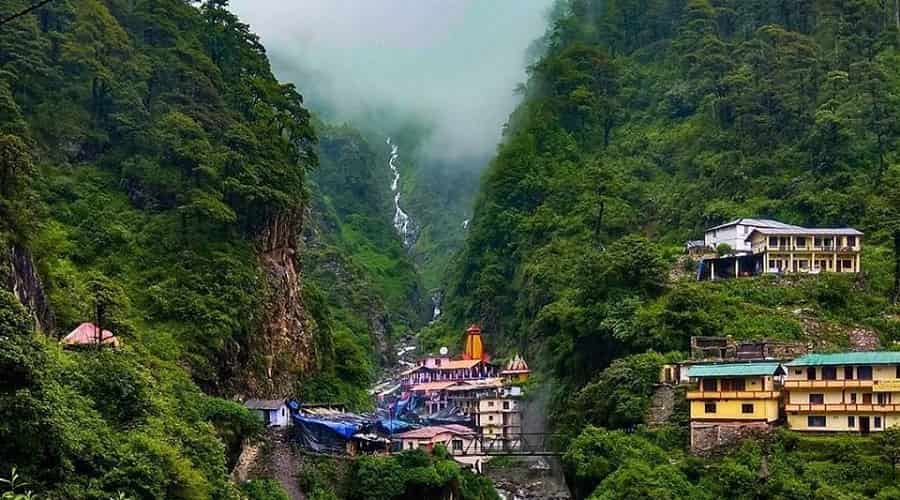
Yamunotri is cradled in the lap of the majestic Himalayas. The weather, therefore, is just like any hill station with cool summers and harsh winters. The monsoons can be severe at times. If you are planning a trip, check the weather forecast and plan accordingly.
Summers
The summers are short, from May to June. The temperature at this time of the year is cool with the mercury hitting 20°C, making it an ideal time to plan your visit. The Yamunotri temple is accessible and the weather supports trekking and camping. The temperature during nights, however, can plummet drastically. So, pack accordingly.
Monsoons
The rainy season gets underway usually in the first week of July and lasts till the first week of September. The heavy rains are expected, causing landslides and flash floods. As such, the risk runs high. You are better off avoiding a trip during monsoons.
Winters:
By October end, the winters set in and continue till April. It’s that time of the year when the place experiences mild to heavy snowfall. With the entire area blanketed in pristine snow, Yamunotri is a sight to behold. However, the temple stays shut and the area becomes inaccessible. That discourages any sightseeing or trekking activities.
Yamunotri Weather Year-Round
| Months | Average Temperature | Weather |
| January | 00°Celsius (-02 to 02) | Severe (Heavy snowfall) |
| February | -03°Celsius (-01 to 04) | Severe (Heavy snowfall) |
| March | 06°Celsius ( 03 to 09) | Severe and Snowy |
| April | 08°Celsius (04 to 12) | Chilly with rare snowfall |
| May | 11.05°Celsius (06 to 17) | Pleasant and Sunny |
| June | 14.05°Celsius (10 to 19) | Pleasant and Sunny |
| July | 14°Celsius (10 to 18) | Overcast with rains |
| August | 26°Celsius (09 to 17) | Overcast with rains |
| September | 12°Celsius (07 to 17) | Pleasant and Sunny |
| October | 08°Celsius (03 to 13) | Cold but Sunny |
| November | 08°Celsius (-01 to 09) | Snowfall anticipated |
| December | 02°Celsius (-04 to 06) | Severe (Heavy snowfall) |
What to Do in Yamunotri?
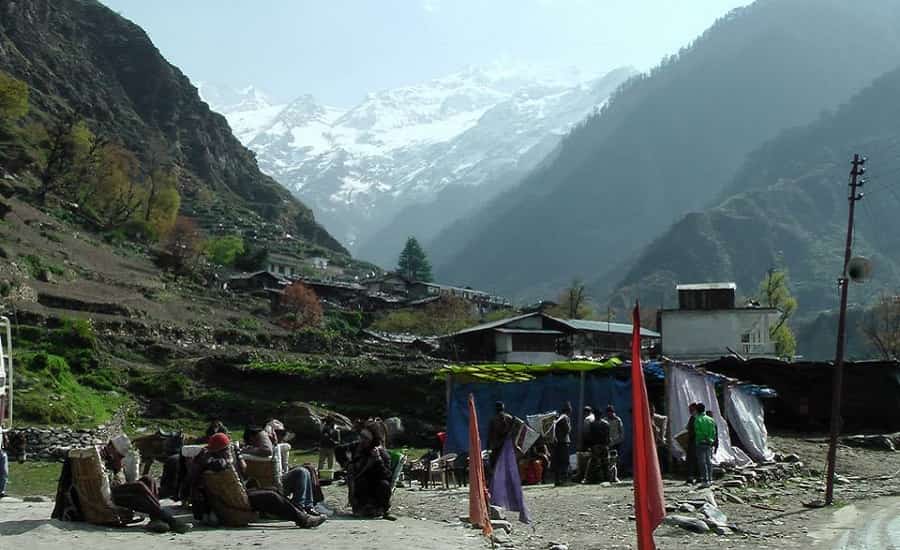
Cradled in a narrow valley, Yamunotri is a small town. Notwithstanding the size, it has a lot to offer to pilgrims, peace-seekers, naturalists, history buffs, and adventure seekers. Here’s your lowdown on the things you should do when in this holy hamlet.
1. Plenary Indulgence
Yamunotri comes across as a major religious center, despite it being inaccessible for half of the year. Devotees flock to the place to pay reverence to the Goddess Yamuna and rinse their sins. Dedicated to Goddess Yamuna, the Yamunotri temple is one of the prime attractions here.
A sacred pillar, Divya Shila also deserves a visit and so does the Surya Kund, a thermal spring. Within a day, you can explore all the sights and sounds. A plenary indulgence is on offer if you are visiting it as a part of the Char Dham yatra.
2. Trekking
If you are a trekking enthusiast, Yamunotri will exceed your expectations. The place lacks road connectivity. The only option, thus, is to walk to Yamunotri from Janki Chatti. The trek is tough, requiring high fitness standards and some prior trekking experience.
However, the effort is worth it since the view at Yamunotri is spell-binding and the serenity is unparalleled. Even the locales on the way up are equally stunning, helping you keep going. So, embark on this wonderful trek to test your endurance and seek bliss.
3. Camping
Spending nights gazing at the starry sky is an experience in itself. So, what’s holding you back? Come to Yamunotri with all your camping gear and enjoy a star-gazing night in a safe and inviting ambiance.
The meadows around Yamunotri are ideal camping sites with open spaces where you can set up your tents or enjoy a bonfire. In fact, camping is a necessity here, especially in the peak season when hotels are full to capacity.
4. Village Tourism
Sample the simple village life in Yamunotri and go home refreshed with memories galore. The area has a fair share of villages that welcome visitors with open arms. Feel free to choose one such village where you can get a first-hand account of the life, food, culture and economy of the rural folks of the Garhwal hills. The hospitality of the local folks is exceptional. You will end up making friendships that last for a lifetime.
5. Photography
So, you are a shutterbug. You cannot miss capturing the splendor of nature on display at Yamunotri. From the icy peaks and green cover to the diverse flora and fauna, there’s so much to capture and make everyone jealous. Prefer taking a DSLR along but if it’s unavailable, your smartphone camera can be a good option.
History and Mythology
The history of Yamunotri is shrouded in mystery. There’s simply no evidence about who established the hamlet and when. All we have is an array of legends revolving around goddess Yamuna who manifests here. A legend has it, the goddess was an offspring of two mythical characters, Surya (the Sun God) and Sangya (the Cloud Goddess).
The mother had to leave her daughter, Yamuna, and two sons (Yama and Manu) to redeem herself when Surya’s luminosity tainted her. She was considerate enough to leave her shadow behind to take care of the family. She birthed the Yamuna at the Champasar Glacier, perched at an imposing height of 14500 feet.
The glacier is cradled in the lap of the Bandarpunch peak, overlooking the snow-clad Kalind Peak, which feeds the Yamuna. For starters, Bandarpunch translates to “tail of a monkey.” As a side note, the peak honors Surya, who is also referred to as Kalind. The Yamuna has a reputation for being whimsical, thanks to her mother’s inability to establish eye contact with her radiant husband, Surya.
Another legend links the origin of Yamunotri to a sage, Asit Muni. The sage made it a point to bathe in the Yamuna every day. However, as age caught up, he was unable to travel to Yamunotri. Moved by the plight of her ardent devotee, Yamuna decided to intervene. She emerged just opposite his abode to make life easier for the sage. Elated and indebted, Asit Muni constructed a temple to honor his deity.
Several Puranic scriptures wax lyrical on the Yamuna. Take, for instance, the Padma Purana. It features a tale of two brothers who were prone to indulgence, adultery and other vices. On their judgment day, they faced Yama. Dhramaraj ordered the elder sibling to be taken to hell (Narka) while the younger one was awarded heaven (Swarga).
That was a weird judgment as both siblings committed the same sins. As a justification for this, Yama said that the younger sibling lodged in Asit Muni’s ashram for a while, which freed him of his sins. Also, he took a bath in the Yamuna, which assured him of heaven.
Documented History of Yamunotri Temple
From a historical standpoint, Maharaja Sudarsan Shah is credited with constructing the Yamunotri temple. Specifications may vary but the year of construction was 1850. Back then, the entire temple featured wooden architecture and housed a marble statue of Goddess Yamuna.
A few years down the line, the temple was brought down. It took Maharaja Pratap Shah to come up with an all-stone temple, which also suffered the same fate. The temple that we see today was an effort of Maharani Guleria of Jaipur.
Places to visit in and around Yamunotri
Yamunotri is a quaint little hamlet. But that doesn’t mean it lacks places of interest. Read on, as we elaborate on the must-visit places in and around Yamunotri.
1. Yamunotri Temple
This small temple is a big draw for devotees. After all, it is one of the four Chota Char Dham pilgrimage locations. As the name indicates, it’s dedicated to goddess Yamuna who is depicted in a black marble statue. The temple is surrounded by magnificent mountain ranges, mesmerizing springs of Surya and Gouri Kund bubbling hot and cold water respectively, and the River Yamuna surging ahead majestically.
It stays open from 6 am to 8 pm, usually from May to October. The inclement weather during those long winters forces the temple to stay shut.
- Dedicated to: Goddess Yamuna
- Sanctum Sanctorum: Black Marble Statue
- Famous for: Being a part of the Chota Char Dham
- Open from: May to October
- Opening hours: 6 am – 8 pm
- Aarti time: 6:30 pm – 7:30 pm
2. Jankichatti
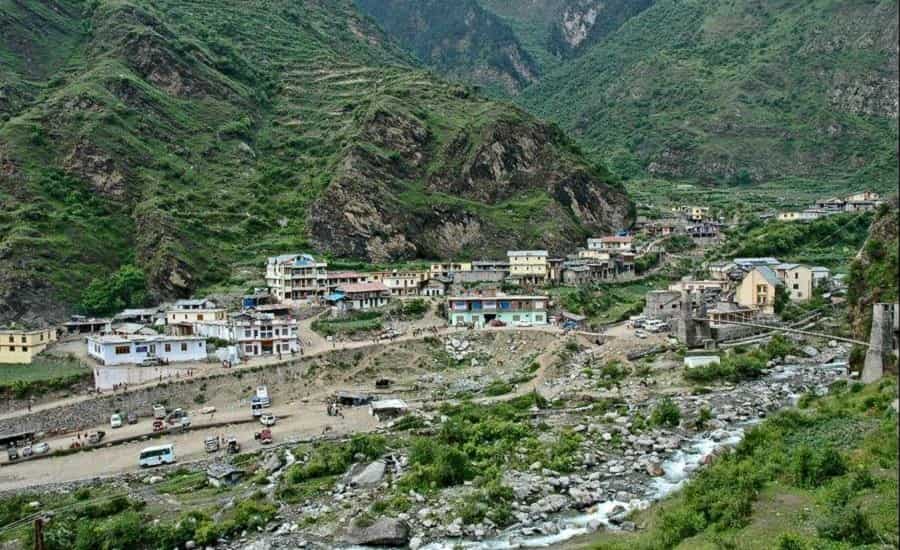
Janki Chatti is well-known for its hot water springs, which are located at an altitude of 2,650 meters above sea level. Janki Chatti covers the region’s final settlement and serves as a significant stopover for pilgrims heading to Yamunotri.
The Janki Chatti hot springs are an unavoidable component of the Yamunotri pilgrimage. From here, feel free to rent horses and palanquins to get to Yamunotri.
3. Surya Kund
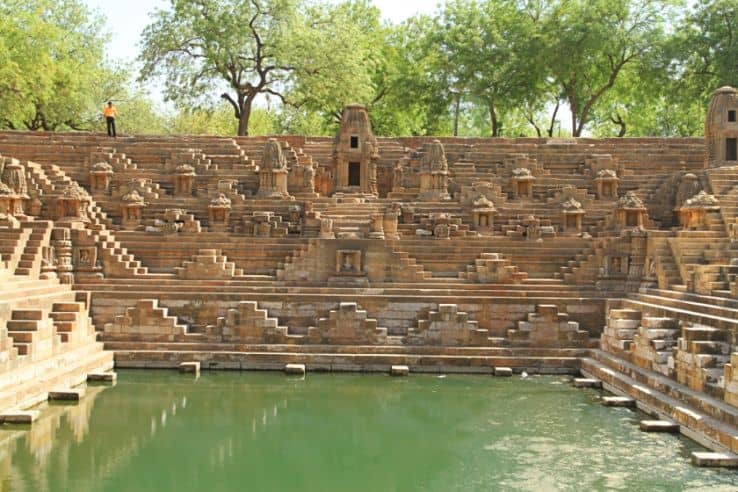
Surya Kund is a geothermal spring located near the Yamunotri shrine. This hot spring takes its title from the River Yamuna, which according to Indian mythology is the child of Surya, the Lord. Surya Kund, which is close to the Yamunotri temple, is regarded as a sacred site.
4. Kharsali
In Uttarakhand’s Uttarkashi area, the undisturbed countryside of Kharsali, also identified as ‘Khushimath,’ is enveloped with romance. It stands at 2,675 meters above sea level, which is an incredible height.
Kharsali is a religiously significant hamlet since it is the winter residence of Goddess Yamuna. Because the Yamunotri temple is unreachable during the winter months due to excessive snowfall, the god is transported here to be worshipped.
5. Hanuman Chatti
At the convergence of the Hanuman Ganga and the Yamuna rivers, Hanuman Chatti is found. Hanuman Chatti (2,400mts), located 13 kilometers before Yamunotri Dham, is a peaceful location with plenty of lodging options. Hanuman Chatti’s beautiful beauty along the river serves as an ideal setting for experiencing ecology and the countryside.
Tourists go to Hanumanchatti because it is a renowned hiking destination in the area. Besides Yamunotri, Hanumanchatti’s best trekking adventure is Darwa Top and Dodi Tal.
6. Champasar Glacier
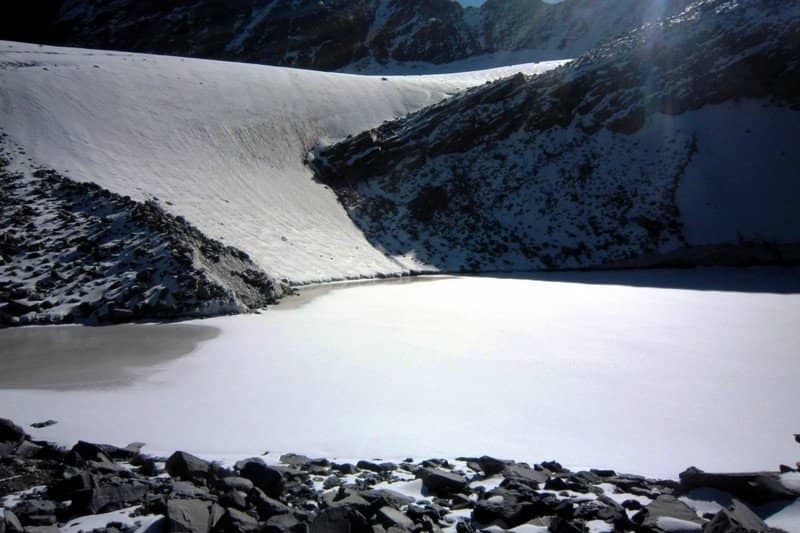
The exact site of Yamuna’s origin is the Champasar Glacier, perched at an imposing height of 14500 feet, about 1 km further up from Yamunotri. It is not that frequented due to its inaccessibility. That’s why the shrine has been located at the foot of the hill. The approach is extremely difficult and pilgrims, therefore, offer puja at the temple itself.
How to reach Yamunotri
You can reach Uttarkashi, Garhwal from all parts of the world via rail, road, and air.
Air – The closest airport is Jolly Grant Airport at Dehradun, which is 190 kilometers from Uttarkashi. Taxis and buses are accessible from Dehradun International Airport to Barkot, Uttarkashi.
Rail – Rishikesh, and Dehradun all have railway stations. Dehradun, around 190 kilometers from Yamunotri, is the nearest railhead.
Road – Uttarkashi has a good motorable road. You can prefer state-run UTC (Uttarakhand Transport Corporation) buses or private taxis and buses to reach the Yamunotri glacier.
Hotels
Uttarkashi offers an extensive range of hotels, motels, and guest houses that suits every pocket. Some good options include:
| Hotels | Price range (in INR) | Google Rating |
| Shivlinga Resort | 4000-4500 | 4.1/5 |
| Dev Dwar Yoga Resort | 2100-2400 | 4.5/5 |
| The North Cardinal Hotel and Resort | 1100-1400 | 4.1/5 |
| 5 Elements Hotel | 1200-1800 | 3.7/5 |
| Hotel Gangaview | 1200-1699 | 4.0/5 |
Food
You can gorge yourself on real Garhwali indigenous cuisines offered in Uttarkashi’s cafes and eateries. Some of the notable local cuisines to sample when visiting Uttarkashi include Kafuli, Thentuk, Chicken-Anardana, and Bhatt ki Churni.
Best time to visit Yamunotri
Because winters are harsh and temperatures drop below the freezing point, the best time to visit Yamunotri is between early spring and late autumn. The summer months provide unique views and scenes to delight the eyes and soothe the soul.
Conclusion
It’s no surprise that the Yamunotri glacier is vital to India, as it feeds millions of Indians as well as animals. Throughout history, travelers and pilgrims from all over the world have found Yamunotri and its surrounding areas to be a peaceful retreat.
It is a coveted destination that will pique the interest of any travel enthusiast, from a devotee to peace-seekers and adrenaline junkies. We hope you enjoy your next visit to the Yamunotri glacier and return to our page to try out new spots.
People are also reading:
FAQs
1. What is the best time to visit Yamunotri?
Early springs to Late autumns are the best time to visit.
2. Is it safe to travel to Yamunotri?
Yes, it is safe to travel to Yamunotri. However, you should avoid visiting during monsoons.
3. How far is Gangotri from Yamunotri?
Gangotri is around 106 km from Yamunotri.
4. Are there any bars or pubs in Ranikhet?
No, there are no bars and pubs.
5. Is there any ATM in Yamunotri?
No, there are ATMs around the point. Uttarkashi is the nearest place where you can find one.
6. When does it snow in Yamunotri?
December, January, and early February can witness snowfall in the area.



